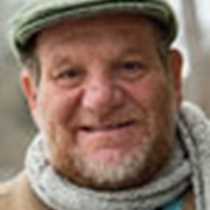Today was the culmination of three days of cultural emersion into the Haida people of British Columbia. Our journey of learning about the Haida began with an examinaion of the tragedy of small pox brought by early western explorers to the region, the horror of the residential schools and the forced separation of family in an effort to assimilate the Haida into modern Canadian culture, and the near extinction of their population. Then, with a visit to SGang Gwaii, we saw a rebirth of the culture of these facinating people. We walked with them though ancient forests, and heard the stories of the village that once thrived there. Our native guides proudly told us of the totem poles that seemed as much a part of the land as the trees and the voices of birds around them. Finally, today, in the village of Old Massett, we experienced the art of modern day Haida and learned how it is an integral part of the healing, and revival of these wonderful people.
Today we visited the workplace and home of two celebrated local artists, Christian White and Jim Hart. We separated into two groups, for the sake of having smaller groups and the ability to interact with our host on a more intimate level. My group went first to Christian’s Long House to hear from the artist himself about not only how he carved the massive totem in front of the Long House, but also why he chose the figures engraved on the totem. He told us his personal story about how his connection to his father gave him the inspiration for this totem, and how pleased he was that his father was able to enjoy the totem before his passing two years after its completion. We then went into his workshop where he explained the process of creating a totem, from the selection of the three, to the raising of the pole. Handling the tools, seeing the works in progress, we left with a more personal understanding of how the creative process is intertwined with family lineage and stories.
At the home of Jim Hart, we were disappointed that Jim was unable to be with us, however, his two esteemed apprentices were more than capable guides to the work of an outstanding artist. Certainly, the high point of this visit was the explanation of the work in progress he calls “reconciliation”. This totem tells the story of the Haida in one incredible piece of art. The base of the pole tells the story of the life of the Haida before western men enforced their rule. The middle of the totem, was to me the most moving, and told of the residential schools, and the sadness of the children, lost between two cultures. Finally, the top of the totem will be the story of the Haida now, a people who are regaining their culture, their property, and their right to choose for themselves what the Haida of tomorrow will be. The pole acknowledges the pain of the past, but celebrates the hope of the future. A moving finish to our journey through the culture of the people of Haida Gwaii.







